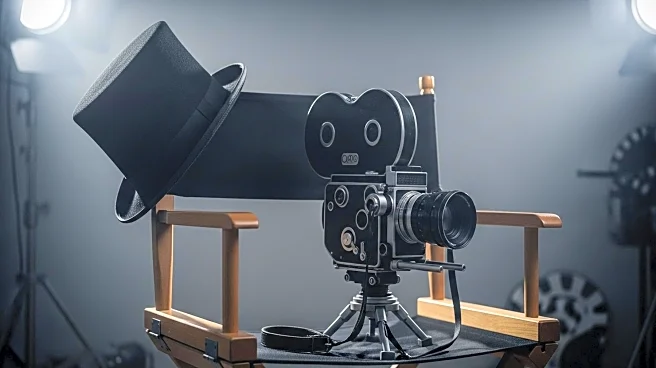What's Happening?
Potsy Ponciroli, an American filmmaker, has introduced his latest project, 'Motor City,' at the Toronto International Film Festival (TIFF). The film is notable for its lack of dialogue, relying solely on action, emotion, and music to convey its narrative. Set in the 1970s, 'Motor City' stars Alan Ritchson as John Miller, an ex-convict who falls in love with the girlfriend of a local gangster, played by Ben Foster. The film features Shailene Woodley as the love interest, Sophia. The plot revolves around Miller's quest for revenge after being framed and imprisoned by Foster's character. The film is produced by Black Bear Pictures and Stampede Ventures, and it showcases Ponciroli's growth as a filmmaker, following his successful debut with 'Old Henry' at the Venice Film Festival in 2021.
Why It's Important?
The release of 'Motor City' marks a significant moment in filmmaking, as it challenges traditional narrative structures by eliminating dialogue. This approach demands greater attention from audiences, potentially influencing future film projects to explore similar storytelling techniques. The film also highlights the versatility of its lead actors, particularly Alan Ritchson, who transitions from comedic roles to a more serious performance. The success of 'Motor City' at TIFF could pave the way for more experimental films in mainstream cinema, encouraging filmmakers to explore innovative methods of storytelling.
What's Next?
Following its debut at TIFF, 'Motor City' is set to be showcased at the Venice Film Festival, providing further exposure and opportunities for critical acclaim. The film's unique approach may inspire other filmmakers to experiment with dialogue-free narratives, potentially leading to a new trend in the industry. As audiences and critics respond to 'Motor City,' the film's reception could influence Ponciroli's future projects and the direction of his filmmaking career.
Beyond the Headlines
The dialogue-free nature of 'Motor City' raises questions about the role of language in film and its impact on audience engagement. By relying on visual and auditory elements, the film challenges viewers to interpret emotions and actions without verbal cues, potentially enhancing their cinematic experience. This approach also underscores the importance of non-verbal communication in storytelling, which could lead to broader discussions about the evolution of film as an art form.











